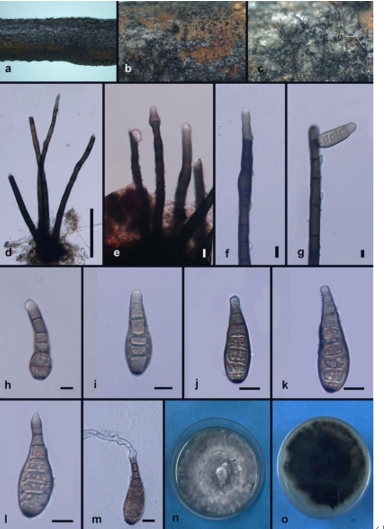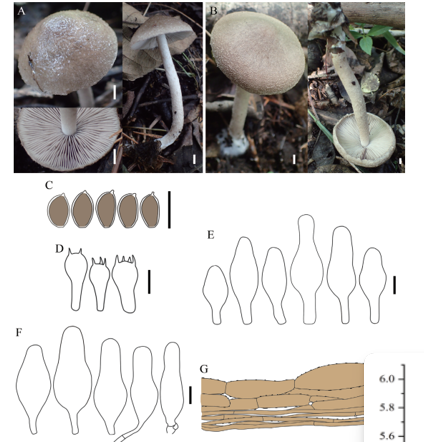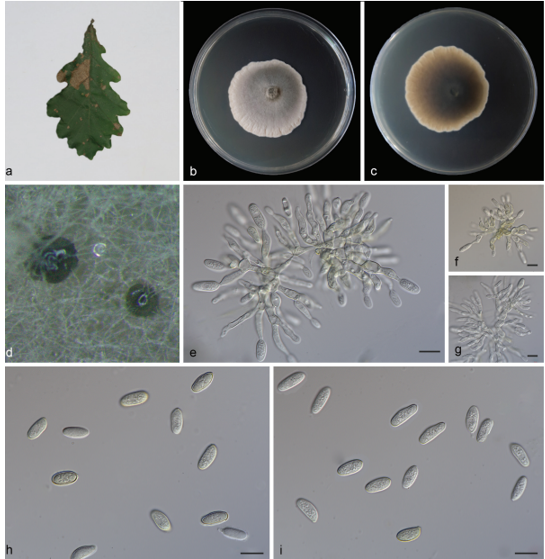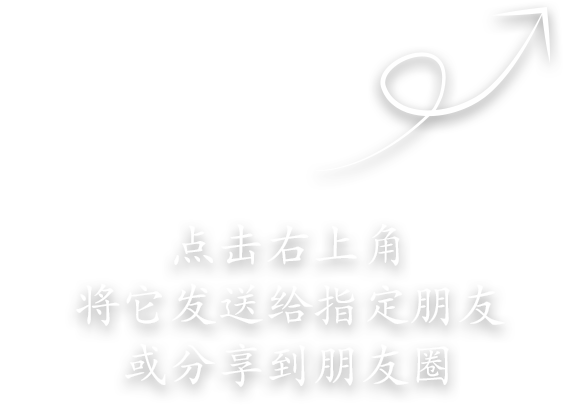Pseudochaetosphaeronema kunmingense D.P. Wei, Wanas. & K.D. Hyde 2020
Index Fungorum number: IF557019; Facesoffungi number: FoF 07078
Holotype: CHINA, Yunnan Province, Kunming City, Kunming Institute of Botany, on decaying twig of Cerasus pseudocerasus (Lindl.) Loudon (Rosaceae), 19 August 2018, D.P. Wei, KIB1902 (KUN-HKAS 102564, holotype), ex-type living culture, KUMCC 19-0215.
Morphological description
Sexual morph Undetermined. Asexual morph Coelomycetous. Conidiomata
180–250 μm diam. ( x̄ = 221 μm, n = 5), pycnidial, erumpent to superficial, globose to subglobose scattered, black, glabrous, solitary, uni-loculate, without papilla. Pycnidial walls 15–50 μm ( x̄ = 30 μm, n = 30), outer layers comprised of thick-walled, brown cells of textura angularis, inner layers comprised of hyaline, thin-walled cells of textura angularis. Conidiophores reduced to conidiogenous cells. Conidiogenous cells 3–9 × 1–2.5 μm ( x̄ = 6 × 1.3 μm, n = 20), produced from inner stromatic tissue, monophialidic, cylindrical or ampulliform, integrated, hyaline, smooth-walled. Conidia 10–15 × 4–6 μm ( x̄ = 13 × 5 μm, n = 50), hyaline when immature, becoming brown at maturity, typically fusiform with round ends, occasionally oval, smooth-walled, 3-septate, slightly constricted at the septa.Culture characteristics: Conidia germinating on WA and germ tubes produced from conidium within 24 h. Colonies growing on PDA, circular, with flat surface, edge entire, cotton, reaching 20 mm diam. in 10 days at 25 °C, gray upper and reverse view with pale gray margin on PDA medium.
Habitat: decaying twig.
Distribution:China.
GenBank Accession: ITS:MN792812;LSU:MN792815;SSU:MN792814;TEF1-α:MN794017.
Notes: In the concatenated gene analyses, Pseudochaetosphaeronema kunmingense shows a close phylogenetic affinity to P. siamensis Jayasiri, E.B.G. Jones & K.D. Hyde (MFULCC 17-2287) with strong support (100% ML, 1.00 BYPP; Fig. 49). Morphologically, P. kunmingense is similar to P. siamensis in having dark brown, uni-loculate, globose to subglobose, glabrous perithecia, monophialidic, cylindrical conidiogenous cells and gray to brown colonies. But it differs from P. siamensis in conidial morphology with selected as the outgroup taxa under Pleosporales. Related sequences are taken from Phookamsak et al. (2019) and GenBank. Seventy-five strains are included in the multy-gene phylogenetic analyses which comprise 2477 characters (882 characters for LSU, 998 characters for SSU and 597 characters for ITS) after alignment. Single gene analyses were also compared for the topology and clade stability with the combined gene analyses. Tree topology of the maximum likelihood analysis is similar to the Bayesian analysis. The best RaxML tree with a final likelihood values of − 12964.530032 is presented. The matrix had 577 distinct alignment patterns, with 26.62% undetermined characters or gaps. Estimated base frequencies were as follows: A = 0.244203, C = 0.220508, G = 0.272622, T = 0.262667; substitution rates AC = 1.857458, AG = 3.628940, AT = 2.129510, CG = 0.931715, CT = 7.125511, GT = 1.000000; gamma distribution shape parameter α = 0.109630. Bootstrap values for maximum likelihood (ML) equal to or greater than 70% and clade credibility values greater than 0.95 BYPP (the rounding of values to 2 decimal proportions) from Bayesian-inference analysis demarcated above the nodes. The newly generated sequences are indicated in bold and blue and extype strains are in bold P. kunmingense having septate, fusiform, yellow-brown, conidia and P. siamensis in having hyaline to subhyaline, subglobose to oval, aseptate conidia (Jayasiri et al. 2019). The comparison of ITS sequences between P. kunmingense (KUN-HKAS 102564) and P. siamensis (MFULCC 17-2287) shows 37 bp differences (6%) within 510 bp. Thus, we introduce our isolates as a new species according to the guidelines of Jeewon and Hyde (2016).
Reference: Kevin D. Hyde1,5,8,22 · Yang Dong2,3 · Rungtiwa Phookamsak1,5,6,7 et al.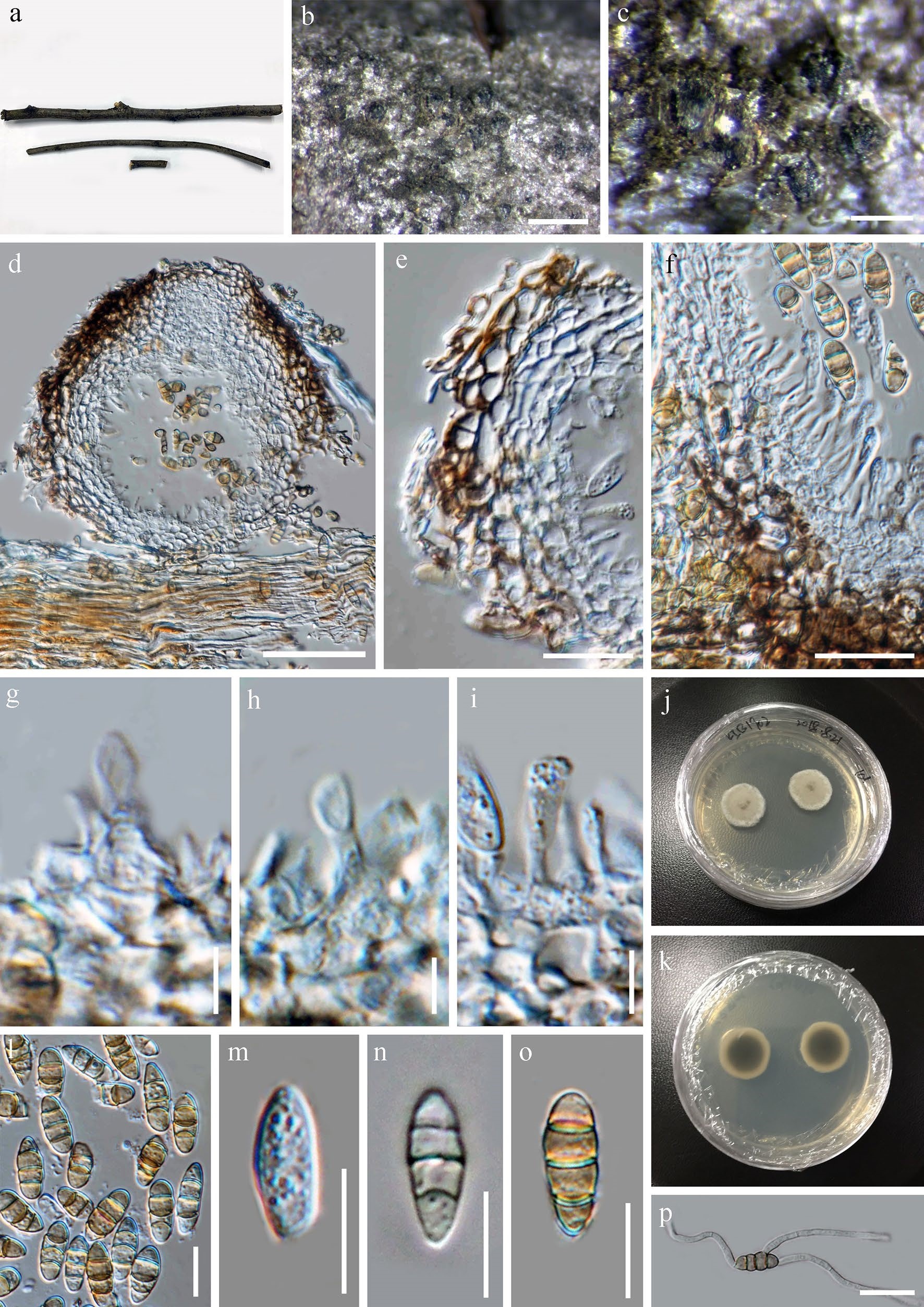
Pseudochaetosphaeronema kunmingense (KUN-HKAS iogenous cells bearing conidia. j, k Colony on PDA from above and 102564, holotype). a Substrate (twig). b, c Conidiomata on sub- below. l–o Conidia. p Germinating conidium. Scale bars: b = 500 µm, strate. d Vertical section of conidioma. e Pycnidial wall. f–i Conid- c = 200 µm, d = 50 µm, e, f, p = 20 µm, l–o = 10 µm, g–i = 5 µm


